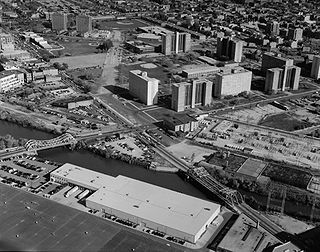
Cabrini–Green Homes was a Chicago Housing Authority (CHA) public housing project on the Near North Side of Chicago, Illinois. The Frances Cabrini Rowhouses and Extensions were south of Division Street, bordered by Larrabee Street to the west, Orleans Street to the east and Chicago Avenue to the south, with the William Green Homes to the northwest.

Robert Taylor Homes was a public housing project in the Bronzeville neighborhood on the South Side of Chicago, Illinois from 1962 to 2007. The largest housing project in the United States, it consisted of 28 virtually identical high-rises, set out in a linear plan for two miles, with the high-rises regularly configured in a horseshoe shape of three in each block. It was located along State Street between Pershing Road and 54th Street, east of the Dan Ryan Expressway. The project was named for Robert Rochon Taylor (1899–1957), an African-American activist and the first African American chairman of the Chicago Housing Authority (CHA). It was a part of the State Street Corridor which included other CHA housing projects: Stateway Gardens, Dearborn Homes, Harold Ickes Homes, and Hilliard Homes.

Oakland, located on the South Side of Chicago, Illinois, USA, is one of 77 officially designated Chicago community areas. Bordered by 35th and 43rd Streets, Cottage Grove Avenue and Lake Shore Drive, The Oakland area was constructed between 1872 and 1905. Some of Chicago's great old homes may be seen on Drexel Boulevard. The late 19th-century Monument Baptist Church on Oakwood Blvd. is modeled after Boston's Trinity Church. Oakwood /41st Street Beach in Burnham Park is at 4100 S. Lake Shore Drive. With an area of only 0.6 sq mi Oakland is the smallest community area by area in Chicago.
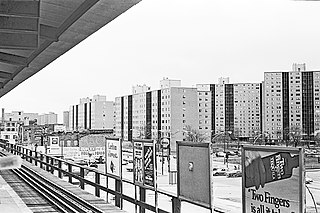
Stateway Gardens was a Chicago Housing Authority (CHA) public housing project located in the Bronzeville neighborhood on the South Side of Chicago, Illinois.
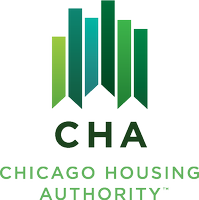
The Chicago Housing Authority (CHA) is a municipal corporation that oversees public housing within the city of Chicago. The agency's Board of Commissioners is appointed by the city's mayor, and has a budget independent from that of the city of Chicago. CHA is the largest rental landlord in Chicago, with more than 50,000 households. CHA owns over 21,000 apartments. It also oversees the administration of 37,000 Section 8 vouchers. The current acting CEO of the Chicago Housing Authority is Tracey Scott.

The Virgin Hotels Chicago is a historic building in the Loop community area of Chicago, Illinois, that has been converted from use as an office building to use as a hotel run via a mobile app-based business model. The 250-room hotel is the first of Richard Branson's Virgin Hotels brand boutique hotels geared toward the female business traveller.
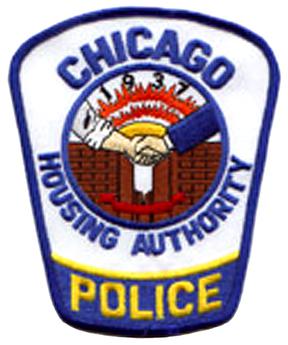
The Chicago Housing Authority Police Department (also known as the CHAPD) was created as a supplement to the Chicago Police Department (CPD), to provide dedicated police services to the residents of one of the nation's most impoverished and crime ridden developments for low-income housing. The CHAPD accomplished their daily goals by utilizing "community oriented policing techniques and aggressive vertical patrol" of all Chicago Housing Authority public housing projects throughout the inner city of Chicago, Illinois and some suburban areas.

Henry Horner Homes was a Chicago Housing Authority (CHA) public housing project located in the Near West Side community area on the West Side of Chicago, Illinois, United States. The original section of Henry Horner Homes was bordered by Oakley Boulevard to the west, Washington Boulevard to the south, Hermitage Avenue to the east, and Lake Street to the north near the United Center. A discontiguous section named Horner Annex was bordered by Honore Street to the west, Adams Street to the south, Wood Street to the east, and Monroe Street to the north. Constructed between 1957 and 1963, The housing project was named in honor of former Illinois governor Henry Horner.
The Fernwood Park Race Riot was a race massacre instigated by white residents against African American residents who inhabited the Chicago Housing Authority (CHA) veterans' housing project in the Fernwood Park neighborhood in Chicago. Area residents viewed this as one of several attempts by the CHA to initiate racial integration into white communities. The riot took place between 98th and 111th streets and lasted for three days, from the day veterans and their families moved into the project, August 13th, 1947 to August 16th, 1947. The Chicago Police Department did little to stop the rioting, as was the case a year before at the Airport Homes race riots. It was one of the worst race riots in Chicago history.

The Ida B. Wells Homes, which also comprised the Clarence Darrow Homes and Madden Park Homes, was a Chicago Housing Authority (CHA) public housing project located in the heart of the Bronzeville neighborhood on the South Side of Chicago, Illinois. It was bordered by 35th Street to the north, Pershing Road to the south, Cottage Grove Avenue to the east, and Martin Luther King Drive to the west. The Ida B. Wells Homes consisted of rowhouses, mid-rises, and high-rise apartment buildings, first constructed 1939 to 1941 to house African American tenants. They were closed and demolished beginning in 2002 and ending in 2011.

Julia C. Lathrop Homes is a Chicago Housing Authority (CHA) public housing project located along the line between the Lincoln Park and North Center neighborhoods on the north side of Chicago, Illinois, United States. It is bordered by the neighborhoods of Bucktown and Roscoe Village. Completed in 1938 by the Public Works Administration, Lathrop Homes was one of the first Chicago public housing projects. Lathrop Homes was placed on the National Register of Historic Places in 2012 and is currently undergoing restoration. Lathrop Homes consists of two-story brick row houses and three- and four-story apartment buildings separated by landscaped courtyards and linked by small archways in a campus-like arrangement. There are a total of 925 units on 35.5 acres of land.

Harold L. Ickes Homes was a Chicago Housing Authority (CHA) public housing project on the Near South Side of Chicago, Illinois, United States. It was bordered between Cermak Road to the north, 24th Place to the south, State Street to the east, and Federal Street to the west, making it part of the State Street Corridor that included other CHA properties: Robert Taylor Homes, Dearborn Homes, Stateway Gardens and Hilliard Homes.

Parkway Gardens Apartment Homes, also known as O-Block is a 694-unit privately owned apartment complex located in Greater Grand Crossing area and is on the border of Woodlawn and Washington Park. Chicago's Greater Grand Crossing, Woodlawn, and Washington Park community areas are located on the South Side of Chicago, Illinois. The complex was built from 1950 to 1955; architect Henry K. Holsman, who planned several of Chicago's affordable housing developments, designed the Modernist buildings.

Hilliard Towers Apartments, formerly known as the Raymond Hilliard Homes CHA housing project, is a residential high-rise development in the near South Side of Chicago, Illinois. It was designed by Bertrand Goldberg and is bounded by Clark Street, State Street, Cullerton Street, and Cermak Road. In 1999, it was placed on the National Register of Historic Places as the Raymond M. Hilliard Center Historic District. The development was named for Raymond Marcellus Hilliard, who was the director of the Cook County Department of Welfare from 1954 until his death in 1966.

The St. Regis Chicago, formerly Wanda Vista Tower, is a 101-story, 1,198 ft (365 m) supertall skyscraper in Chicago, Illinois. Construction started in August 2016, and was completed in 2020. Upon completion it became the city's third-tallest building at 1,198 ft (365 m), surpassing the Aon Center. It is the tallest structure in the world designed by a woman. It forms a part of the Lakeshore East development and overlooks the Chicago River near Lake Michigan.
Wolf Point East Tower is the second tallest of three buildings being developed in the Near North Side community area on the Wolf Point property at a fork in the Chicago River in downtown Chicago. The building is planned to be approximately 60 stories and 660 feet (201.2 m) tall. It will have 698 units. Although originally intended to be a mixed use building when planned in 2012 and approved in 2013, the building was reenvisioned as an apartment building in 2016. Construction began in 2017 and is currently finished.

The Lake Michigan High-Rises, also known as Lakefront Homes, was a Chicago Housing Authority (CHA) public housing project in the North Kenwood–Oakland neighborhood located in the South Side of Chicago, Illinois, United States. Constructed in 1962 and completed in 1963, The Lake Michigan High-Rises originally consisted of four 16–story buildings; totaling 457 units. The Lake Michigan High-Rises was located west of Lake Shore Drive and was included as a part of the CHA Lakefront Properties. Today, only two buildings of the Lakefront Properties exist; they were officially renamed from Victor Olander Homes to Lake Parc Place in 1991. The other four high–rises were demolished by implosion in December 1998, it was the first and only to date in Chicago Housing Authority history.
Loebl Schlossman & Hackl is an American architecture, interior design, and planning firm based in Chicago, Illinois. Founded in 1925 and known by various names through the years, the firm is responsible for the design of several major Chicago landmarks including Water Tower Place in 1975 and Two Prudential Plaza in 1990.
The National Public Housing Museum is a historical institution that will be opening at 1322 W Taylor St. in Chicago, Illinois, and currently is located at 625 N Kingsbury St. in Chicago. The museum is located in the last remaining building of the Jane Addams Homes of ABLA Homes, and will feature an oral history archive, public programming, and an entrepreneurship hub. Exhibitions will include restored apartment of three families who lived in the Jane Addams homes. The building that the museum is contained within opened in 1938 as the first federal government housing project in Chicago. It housed thousands of families over six decades and has been vacant since 2002
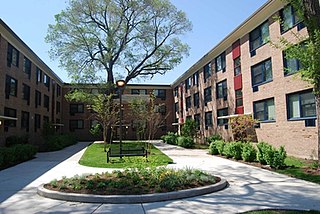
Wentworth Gardens is a low rise 344-unit housing project operated by the Chicago Housing Authority (CHA). It lies just south of Guaranteed Rate Field in Bronzeville on Chicago's south side.

















